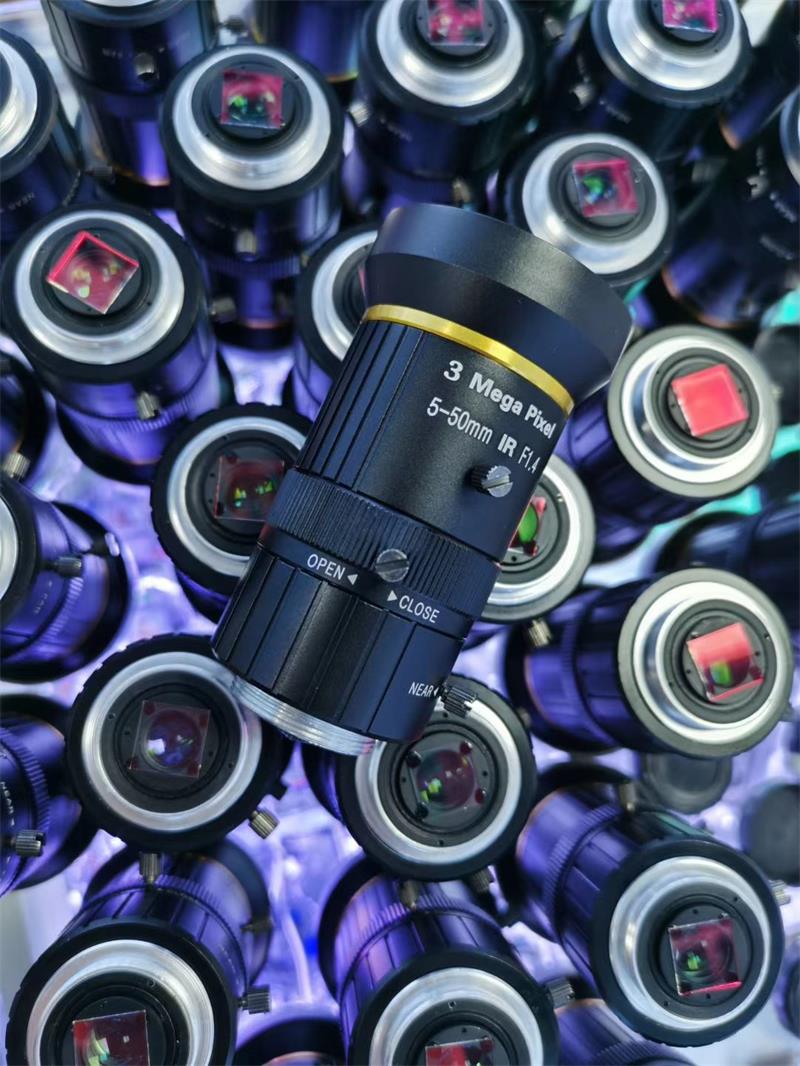Classification of industrial lenses / Category of industrial lenses
Industrial lenses are widely used in re-industrial testing, machine vision, biomedical, new energy testing, document images, teaching and scientific research, low-light imaging, microscopic imaging, dimensional measurement, screen detection and other fields, machine vision industry commonly used in the important lenses mainly include FA lenses, far-center lenses and industrial microscopes.
1, according to the industrial lens mount type classification
Also known as C-port industrial lens, is currently in the machine vision system using a wide range of industrial lenses, with light weight, small size, low price, variety and other advantages, its interface textured parameters: common diameter of 1", pitch: 32 teeth.
A C-mounted variation interface called CS-mount differs from C-MOUNT only in that the positioning surface of an industrial lens is different from the light-sensitive surface of an image sensor. C-MOUNT is 17.5mm, while CS-mount is 12.5mm, a 5mm difference between them, and industrial lens products on the market, such as the ZML series of small multiplied industrial lenses, all with standard C mount
The CS-MOUNT interface is designed for new CCDs. With the development of CCDs, the integration level is getting higher and higher, and the photosensitive array of the same resolution is smaller. Therefore, CS-MOUNT is more suitable for the smaller size of effective photosensitive sensors. Industrial video camera.
Industrial cameras with CS interface can be connected with C and CS interfaces, but C-installed industrial lenses need to be equipped with an adapter ring; industrial cameras with C-interface can only be connected with C-installed industrial lenses, not with CS Install industrial lens connection, otherwise not only can not get good focus, but also may damage the CCD target surface.
2. 35mm full frame camera industrial lens
This kind of industrial lens is the 35mm industrial camera industrial lens used in daily life. It is a very good industrial lens in terms of cost performance. Many industrial cameras and line scan CCDs need to be equipped with such industrial lenses.
One disadvantage of the 35mm industrial lens is the bayonet fixing method. When this fixed method is used in a vibrating environment, the industrial lens will move. So in the machine vision system, 35mm camera industrial lens is not a good choice.

3. Classified by equivalent focal length of industrial lens
①Wide-angle industrial lens
An industrial lens with an equivalent focal length smaller than the standard focal length (50mm). It is characterized by short working distance WD, large depth of field, large viewing angle, and the distortion is usually barrel distortion.
②Long focal length industrial lens
The equivalent focal length exceeds 200mm, the working distance is long, the magnification is large, and the distortion is usually pincushion distortion.
③Medium focal length industrial lens
The industrial lens commonly used in machine vision systems has a focal length of about 50mm, which is between a wide-angle industrial lens and a long-focus industrial lens. Normally, distortion correction is better.
(4) Far-heart industrial lens
In machine vision systems, the size of objects is often important. However, the average industrial lens in imaging, away from the industrial lens of the object imaging is small, and the same size of close object imaging is larger, resulting in measurement errors. Far-heart industrial lenses are designed to eliminate this error, so that objects of the same size, different distances and nears get the same size image on the imaging surface, and far-heart lenses are divided into single-far-heart lenses and double far-heart lenses.
(5) Macro industrial lens
An industrial lens for shooting smaller objects with a large industrial lens magnification ratio.
3, according to the industrial lens has the function classification
(1) Zoom-adjustable industrial lens
It is relative to fixed-focus industrial lenses. By moving the lenses between each other in the industrial lens, the focal length of the industrial lens changes within a certain range, so that the CCD industrial camera can obtain both panoramic and local detail images without the need to replace the industrial lens. Zoom industrial lens range is generally 6, 8, 10, 12, 16, 20, 50 times and so on.
(2) Variable aperture industrial lens
In an industrial lens, a variable aperture is pressed to control the amount of light input, allowing the relative aperture F of the industrial lens to change continuously to accommodate the correct exposure to objects of different brightness. Adjusting the size of the aperture has been mentioned to affect the depth of field. Therefore, in order to obtain the effect of large depth of field, in the lighting permit, should be as much as possible to increase the intensity of lighting, reduce the aperture, to obtain a larger depth of field.
According to the functional classification, can also be further divided into autofocus industrial lens, automatic aperture industrial lens and so on.
4. According to the magnification, it can be divided into fixed magnification lens and variable magnification lens.
Fixed magnification lens: fixed magnification, fixed working distance, no aperture, no focus, low deformation rate, can be used with coaxial light source.
Variable magnification lens: without changing the working distance, the magnification can be adjusted steplessly. When the magnification is changed, it still presents excellent image quality and complex structure
Vehviscam manufacture limited www.Vehviscam provides various kinds of portable mini USB industrial Camera for embedded vision system and other commercial and industrial security applications, welcome to view more online or contact us